
Two more days in National Pollinator Week! Go out and find something awesome this weekend!
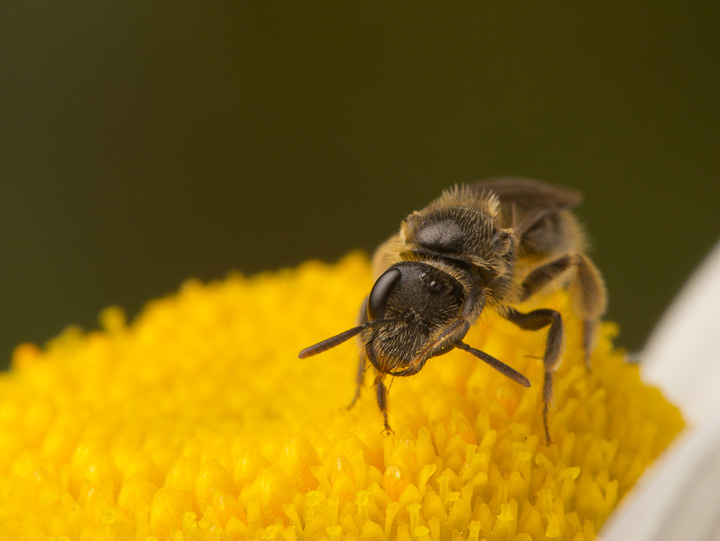


Two more days in National Pollinator Week! Go out and find something awesome this weekend!


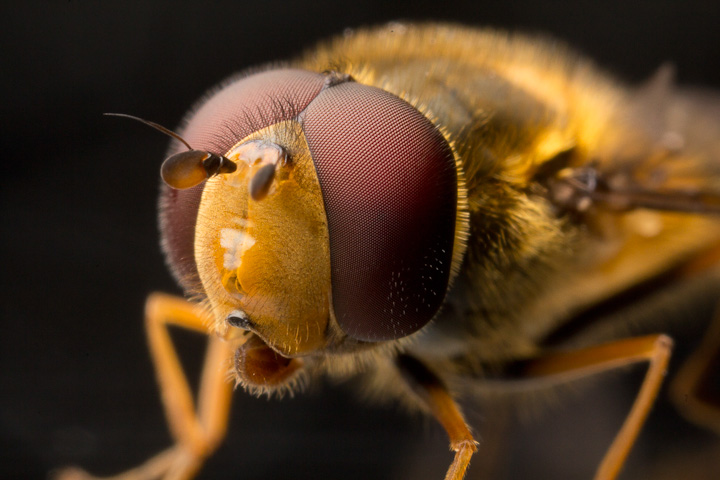
It is still National Pollinator Week in the USA, and I hope they are having a good one. Here in Vancouver, it is rainy and cold. But that is no reason not to engage in some pollinator photography! A couple weeks ago, I found a syrphid larva among the blackberry leaves we feed our stick insects.
I ended up keeping it in the cage, feeding it with bunches of aphids.
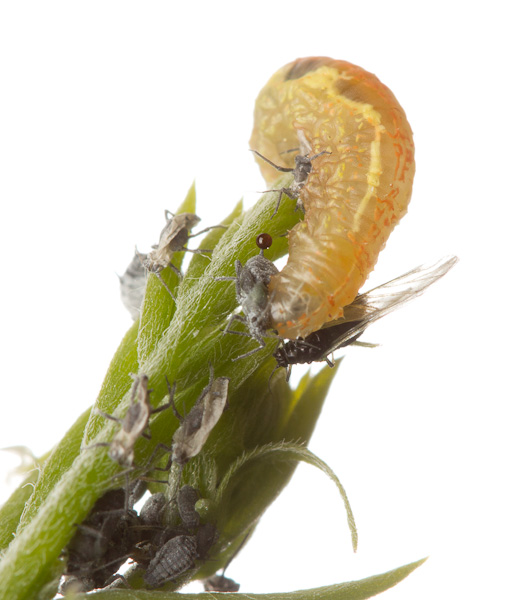
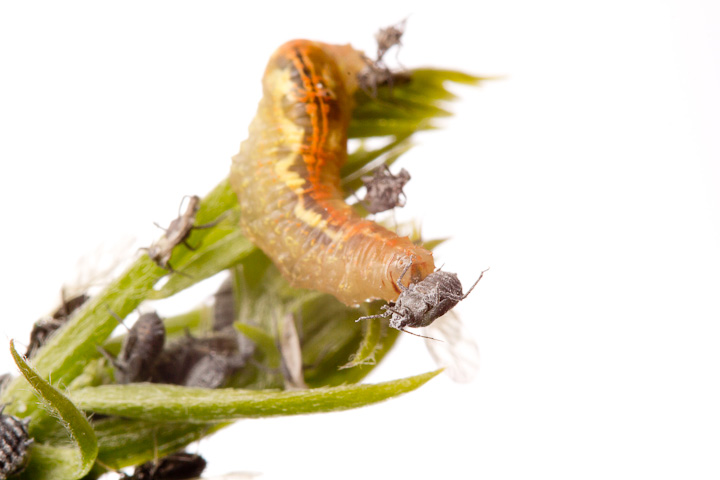
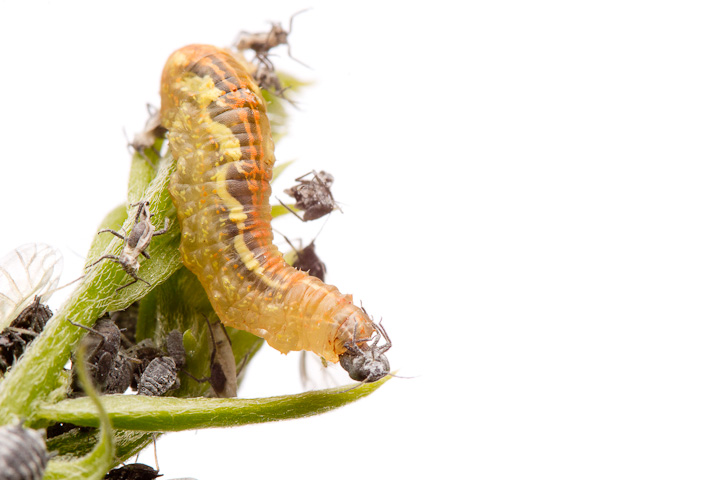

The larva disappeared after a day of eating so well, so I presumed it had dropped to the soil to pupate. Sure enough, today we found him buzzing around the cage. I took the opportunity for some pictures, then sent him out (in a protected location) after a meal of honey.





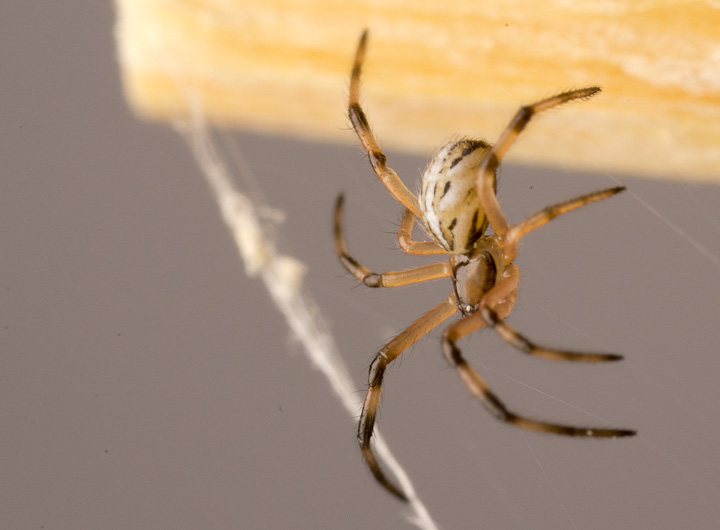
Remember those black widow egg sacs we collected a few weeks ago? Well, the spiderlings have hatched, moulted once, and are now emerging from their egg sacs!
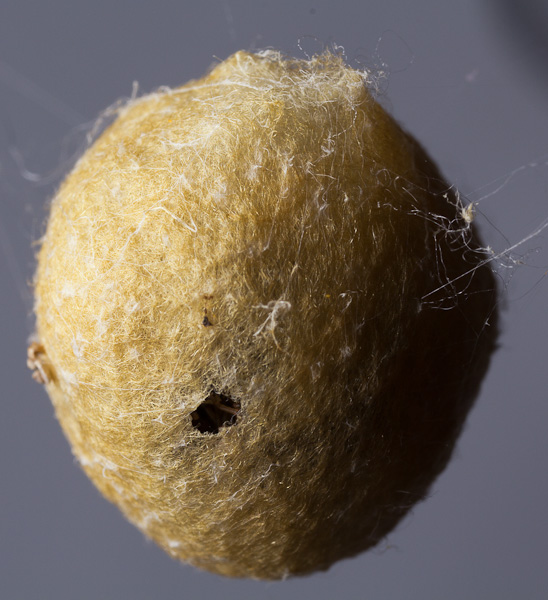
Here is what an egg sac looks like when it is ready.
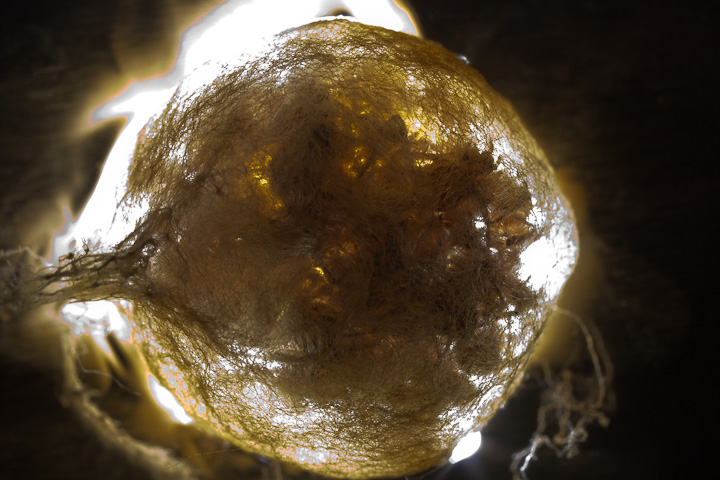
And here, with light penetrating the silk, you can see the spiderlings inside:

A spiderling peeking out.
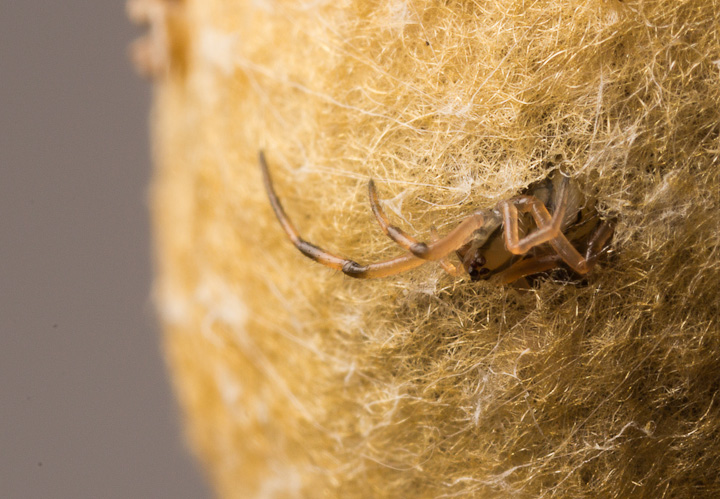
And squirming free.

Done!

Here, the baby spiders socialize at the playground. They are best of friends at this stage…
Just kidding! They cannibalize each other like zombies!
In other baby spider news, at the apartment, the cellar spiders have hatched, and are spending some time adjacent to mom in the same corner where they were brooded.


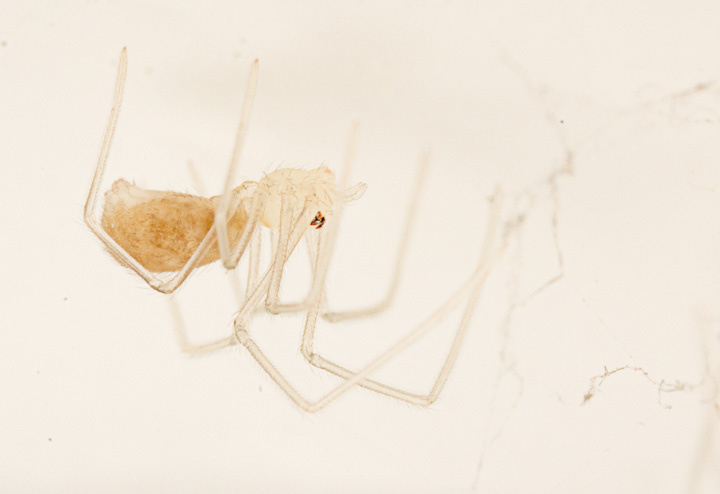

It is National Pollinator Week in the USA. Here in Canada, many are celebrating as well, such as this lovely goldenrod crab spider, Misumena vatia.
Check out Alex Wild’s post on taking better pollinator photos, and enjoy the week!
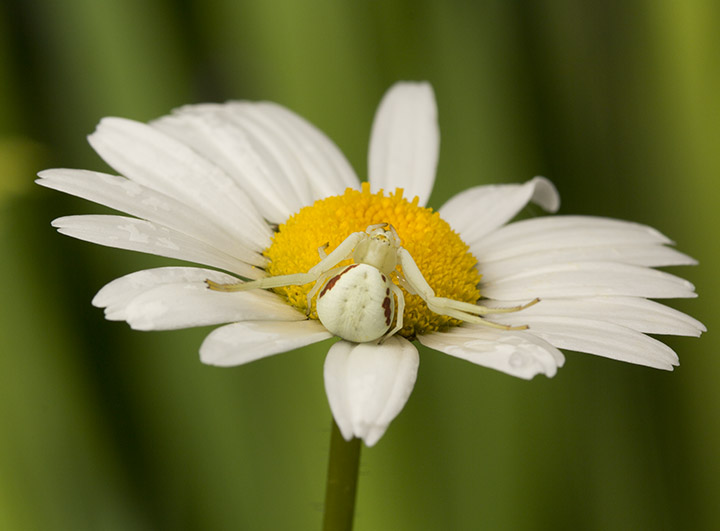
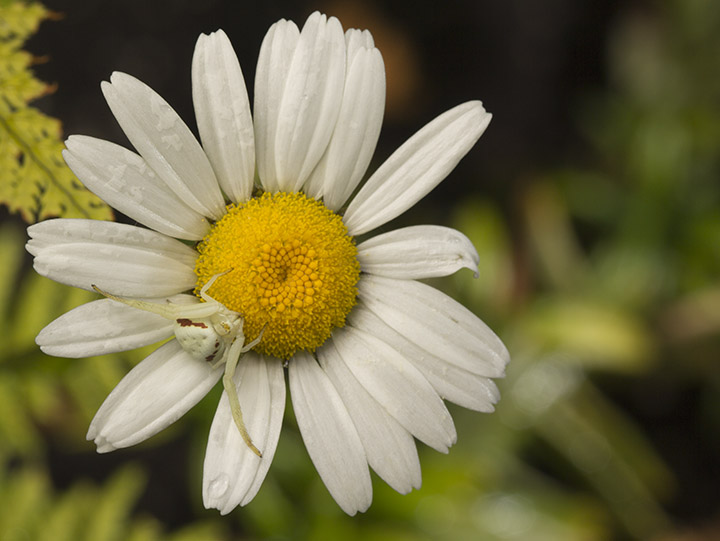

Seeing as how last week’s Sitting on White was fun to do, and inspired by this great post by Alex Wild, I decided to shoot some jumpers sitting on black.
To do this, I simply spray painted a sheet of window glass black, and used the unsprayed side as a stage. The lighting was much more simple than Alex’s, just single diffused speedlight overhead. All shots required a good deal of “healing” to remove dust, but in general they came out OK. The better method would be to get a thick piece of glass as Alex described, but I do not have any such on hand, and if I had tried this with the glass suspended, i would get ugly double reflections. Anyway, I hope you enjoy the pics, and get inspired to try it yourself!
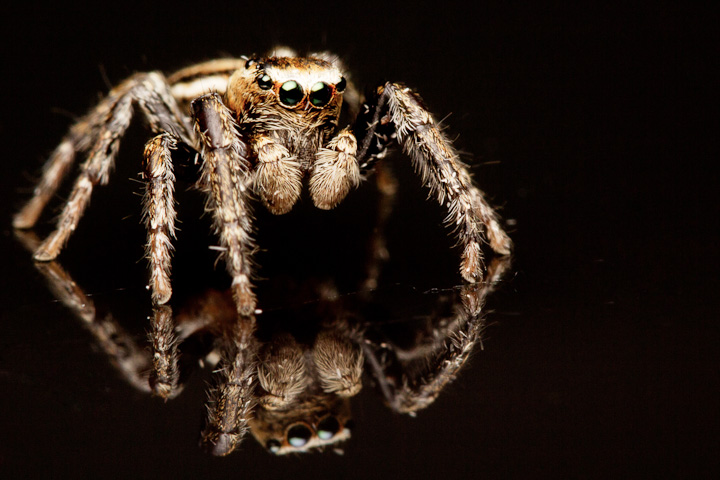

I think this guy could see his reflection!

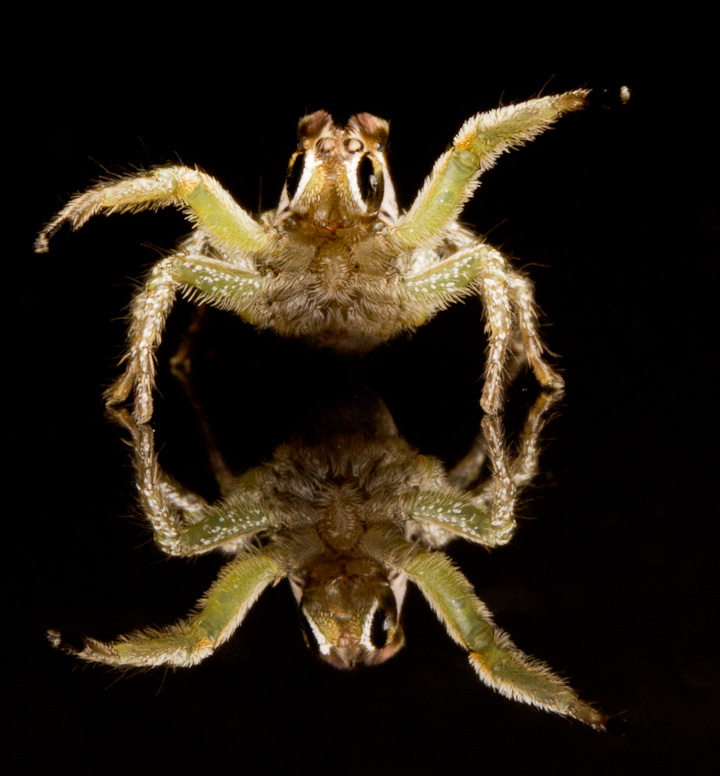

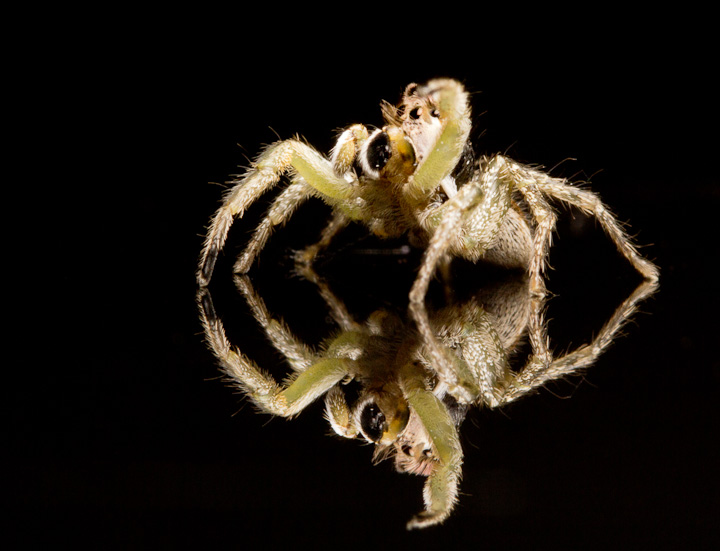


By the way, when I tried to bring in a snooted rim-light, this is what happened. Messy, but kind of cool!


Wow! It has already been 6 months since I have been blogging here at Ibycter! I started this blog on January 17th with three posts, and have kept up a pace of roughly three posts per week since that time, with two regular features, the Weekend Expedition and Cheapskate Tuesday. Midweek, I usually post some find I make during the week, or perhaps a more in-depth article on some aspect of Red-throated Caracara biology or tropical fieldwork. I have plans to expand these in-depth articles, as well as the midweek finds, especially as we are in the full swing of insect season here in Vancouver.
Here at Ibycter, I have the amazing ability to see exactly what works well, by seeing the view counts for each post. Here is a rundown of the top 5 posts by view count, followed by three posts I thought did not get enough attention.
Posts You Liked
5. Cheapskate Tuesday 10: the Monster Macro Rig A full how-to about my regular light setup for use with a 100 mm macro lens.
4. Schrödinger’s Grant: This lighthearted piece was Catherine’s name for the limbo that is waiting on results of a grant proposal.
3. How not to make money off a viral story: A simple and old story of copyright infringement of images of a large mosquito.
2. Found: Red-legged Frog on Burnaby Mountain : Sometimes, when writing under the fluorescent lights in the lab gets to be too much, I head out to the woods of Burnaby Mountain to see what I can see. This time I found a less-than common frog.
1. What to expect when your Cellar Spider is Expecting: sometimes the best wildlife stories are close to home!
Posts I liked
3: The Red-throated Caracara: Introducing my favourite loud bird: the overview you were waiting for.

2. Snakes!! A bit about snakes in the rainforest.
1. Ever meet a treetrunk spider? How a beautiful spider got from the forests of French Guiana to our basement suite wall.
So there you have it, Ibycter‘s 6 month blogiversary, and my first roundup post. Please let me know what you liked and didn’t like about these last 6 months, and what you would like to see for the future.
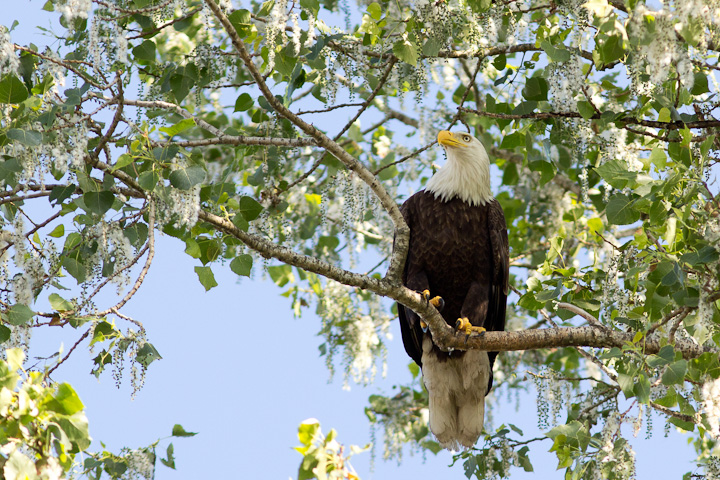
This Weekend Expedition was to the wilds of Stratchcona Park (no not that one). This is a large park in East Vancouver that features some huge cottonwoods, playing fields and a big community garden! Also, there is a bald eagle nest in one of the cottonwoods, so it is just the place for an insect/raptorophile such as myself.

These chicks will likely fledge in a week or so. I thought this was a cool shot showing them all stacked up in the morning light.



There are many ways to enjoy the park, like biting your best friend’s head at full gallop!

A Cranberry Girdler (Chrysoteuchia topiaria) rests on a grass stem. The gardens are a good source of pests!

A male Wool Carder Bee (Anthidium manicatum: Megachilidae), a European import, waits on Lamb’s Ear (Stachys byzantina) for a female.

A female Wool Carder gathers Lamb’s Ear fibers for her nest.

The Varied Carpet Beetle (Anthrenus verbasci) is a gorgeous flower feeder in the summertime.

Coming in!

Honeybee in a poppy.

A pretty little ichneumonid (Mesostenus thoracicus)grooms.

The under-log fauna. Isopods are actually quite attractive little beasts.
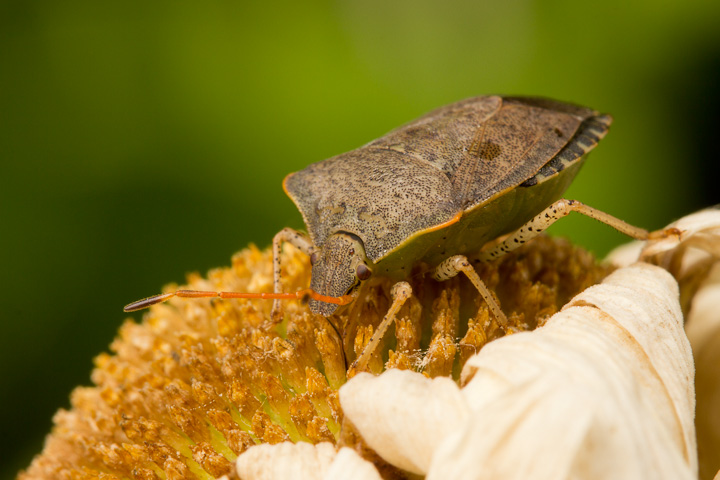
A large stinkbug on a dead daisy.

A Linnaeus’s Spangle-wing (Chrysoclista linneella), sits on a trunk. There were hundreds out today, flying around a grove of European Linden.
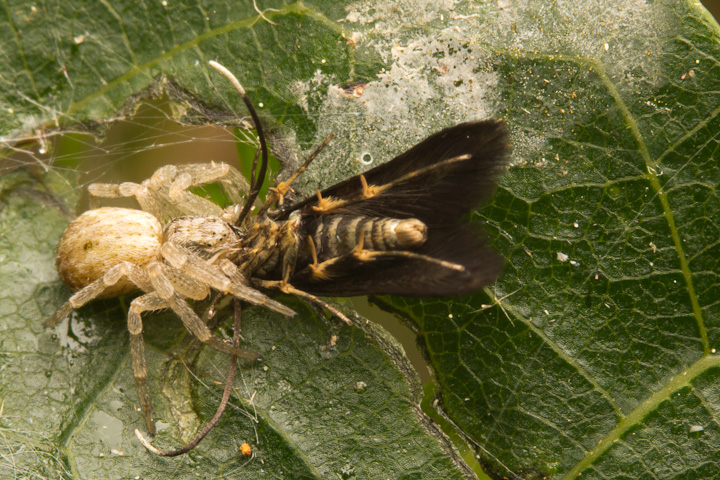
This crab spider enjoys the haul of Spangle-wings.

I found this jumping spider yesterday on the wall of the Insectary Annex at SFU. From browsing on Bugguide, I think it is a male Evarcha, but I am not sure which species. Anyway, since the last shots of jumpers on white were well-received, I thought I would share these as well. I hope you enjoy hem!
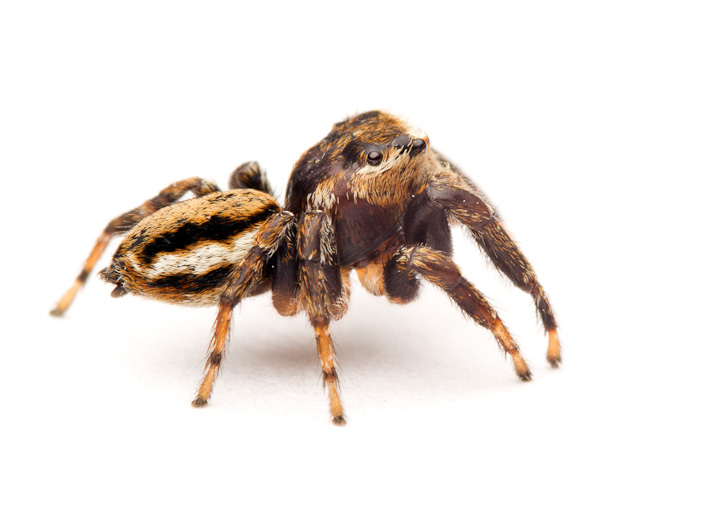

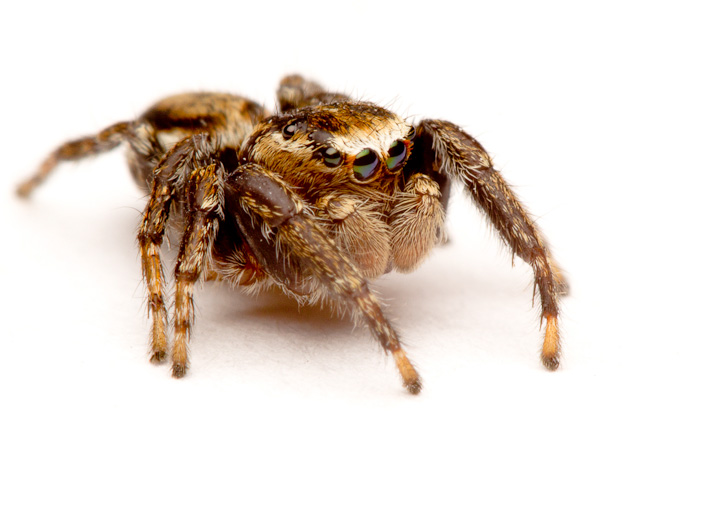



I spent some time this evening photographing this very cool-looking weevil, Cryptorhynchus lapathi, AKA the Poplar and Willow Borer. I found it clinging to a bridge in Hastings Park looking very much like a dried bird poop.

Weevils (Curculionidae) are widely held to be the cutest beetles, and this one was no exception. Something about their snout and beady little eyes makes them adorable. That’s what I think anyhow. You be the judge.
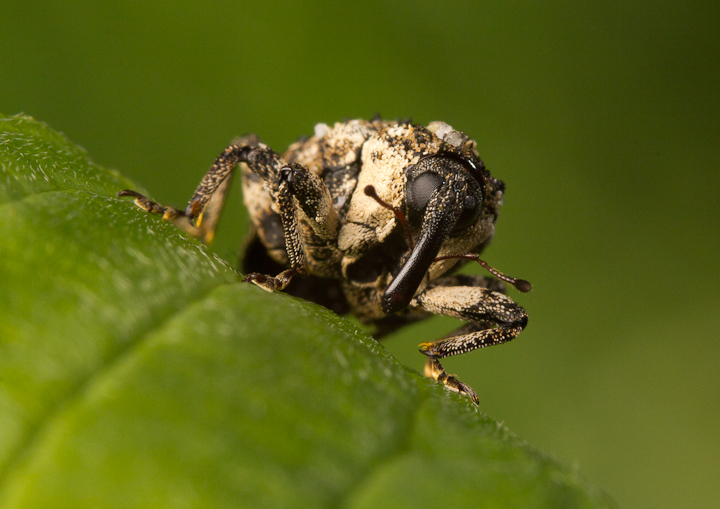

“I don’t always bore into trees, but when I do, it is a poplar or willow”.
In September of last year, I was contacted by Ephraim Ragasa, a student at the University of Florida for permission to use a photo I took of Psorophora ciliata, the Gallinipper mosquito. These large mosquitoes are surely one of the largest blood-feeding mosquitoes in North America, and it is quite a shock when they come around looking for blood.
Ephraim wanted to use the photo for a Featured Creatures article, a common assignment for students in the Entomology and Nematology Department at UF. Since that time, for whatever reason, the media has picked up on this and spun it into a story of “Giant Mosquitoes Invading Florida!” or some other such tripe.
The photo has been copied and reproduced at least a hundred times since then, being used by news media, in pest control websites and on blogs. Only Deborah Netburn, a journalist with the L.A. Times has contacted me for permission to use the photo. She turned out a very nice article, with the scientific name spelled correctly and the facts straight. I was happy to help her.
For the others, many did not credit me, I certainly have not seen any payment, and frankly it pisses me off that everyone except me is making money off my image.
It turns out that the copyright notice on the UF website is nebulous and seems to imply free usage rights for “educational purposes”, so I guess it is down to me that the photo does not give me any income, although the pest control companies will be receiving an invoice for their uncredited and illegal commercial usage.
Anyway, all of these issues been covered extensively and in much better detail by Alex Wild, someone who makes his living from photography, but speaking as a student who is having trouble paying tuition, I lift my middle finger at the unethical commercial exploiters of copyrighted work. So there.
Update: The Hastings Park Eagle agrees with me:
